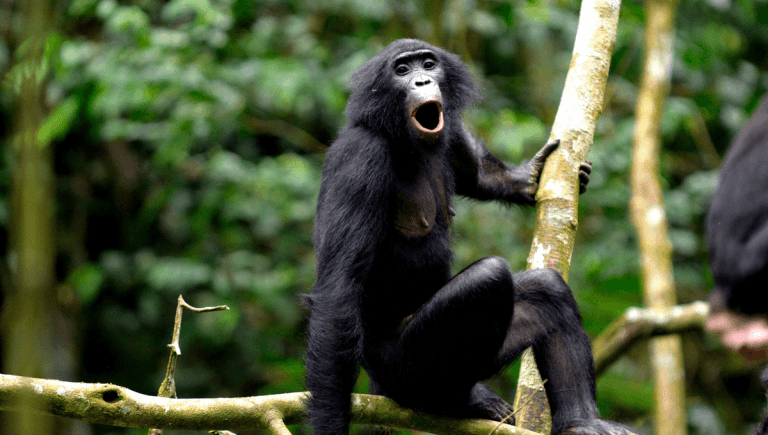Bonobos huts and whistles may seem like simple and wild calls, but more in -depth listening reveals that their communication shares more structural similarities with human language than we thought.
Bonobos are the most vocal of large apes, using a variety of treble calls to communicate with other members of the species. Some of the vocalizations are noisy whistles and hoots that travel through the jungle, while others are “kicks” and grunts for more intimate moments. The species can be of very similar shape and size to chimpanzees, but their calls are a octave above that chimpanzee calls.
In a new study, scientists at the University of Zurich and Harvard University have examined the communication from Wild Bonobos and have found that calls are deeply complex. In addition, vocalizations share many of the key characteristics that make human language.
The team analyzed 700 Bonobo vocal calls and identified 300 contextual characteristics associated with each chatter. Like human language, Bonobo’s vocalizations present compositionality, which means that they combine a finished set of types of calls in significant structures.

Mia, a young bonobo woman from the Fekako community, vocalizing in response to members distant from the group.
Image credit: Martin Surbeck / Kokolopori Bonobo Research Project
In linguisticCompositionality is in two forms: trivial and non -trivial. In trivial compositionality, each word of a combination retains its independent meaning, and the overall meaning is simply the sum of its parts. For example, a “blonde dancer” is both blonde and dancer, and if that person is also a doctor, we can easily call them a blond doctor without changing the meaning of “blonde”.
On the other hand, the non -trivial compositionality works differently because a word modifies the other in a way that changes its meaning. For example, we could say “bad dancer”, but that does not mean a bad person who can dance. Rather, it means someone who is not good at dancing. If this person is also a doctor, we cannot assume that he is a bad doctor simply because they are a bad dancer. In this case, the “bad” has no independent sense, it only has meaning in relation to “dancer”.
This type of compositionality is what gives human language its flexibility and complexity – and it turns out that bonobos have also mastered it. The hundreds of recordings have shown that Bonobo calls combine different sounds in four composition structures, three of which have non -trivial compositionality.
A bonobo emits a subtle glance before the whistle, to designate tense social situations (here, the Bonobo makes a display in front of the other members of the group by dragging a branch). Credit: Mélissa Berthet
Bonobos are our most alive parents as well as chimpanzees, both sharing 98.8% of their DNA with humans. By studying the vocalizations of our great monkey cousins more closely, we can better understand how human language has evolved towards the complex system that we are talking about today.
The study is published in the journal Science.


